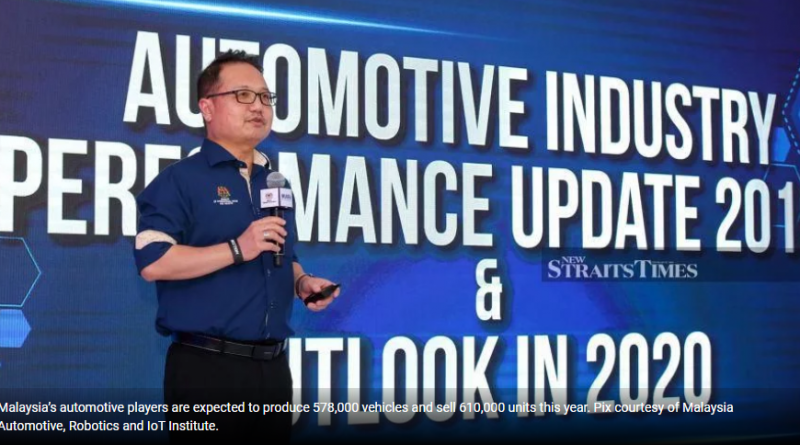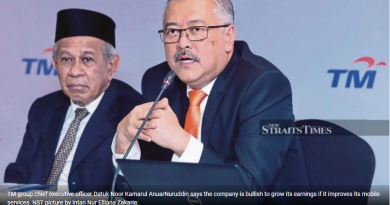Malaysia’s vehicle sales expected at 610,000 units in 2020
KUALA LUMPUR: Malaysia’s automotive players are expected to produce 578,000 vehicles and sell 610,000 units this year.
Malaysia Automotive, Robotics and IoT Institute (MARii) said this would be underpinned by a continued increase in terms of energy efficient vehicle (EEV) penetration, at 90 per cent from 87.58 per cent last year.
Last year, the total vehicles sales stood at 604,287 units, up one per cent over 2018, while total production rose 1.2 per cent to 571,632 units.
MARii, an agency under the International Trade and Industry Ministry, said the automotive sector has continued its contribution to the Malaysian economy by demonstrating an overall increase in performance in various areas.
This included EEV penetration, parts and components (including remanufacturing) exports, human capital development, as well as domestic sales and production.
MARii chief executive officer Datuk Madani Sahari said the local automotive industry was projected to attract new investments of up to RM1.43 billion in 2020.
Of the total, RM1 billion worth of investments would involve services under the National Automotive Policy 2020 (NAP 2020).
Madani said the investments would also involve automotive parts and components as well as products.
“These services are related to mobility-as-a-service (MaaS) and include the testing and certification as well as inspection,” he said at a press conference on MARii’s automotive industry performance 2019 and outlook in 2020 here today.
Madani said exports of parts and components (including remanufacturing) were expected to contribute RM16 billion this year.
The industry’s overall exports amounted tof RM15.45 billion last year, a continuous year-on-year increase since 2014.
He said key measures to be executed this year would be based on the NAP 2020 to accelerate the development of next-generation vehicles (NxGVs) and MaaS in Malaysia, including the adoption of Industry 4.0 technologies.
“The government will be developing an electric vehicle interoperability centre (EVIC), containing various facilities needed for the testing of NxGVs.
“This includes charging stations, smart grid integration solutions and various other infrastructures to accommodate the research and development phase of future mobility,’ he added.
He said the combination of various facilities in the EVIC will create an NxGV ecosystem based on these future technologies.
Madani said an NxGV test bed was also in progress, allowing all businesses in the mobility ecosystem to collectively design and validate their products in a single location, in collaboration with all members that contribute to the design pool for autonomous driving.
He said the automotive stakeholders can also expect standards development in various areas with the enhancement of current talent and value chain programmes.
The various areas include EEV, EVIC, NxGV; vehicle inspection (vehicle roadworthiness), vehicle inspection (used vehicle evaluation), motor vehicle aftermarket – service, spare parts and sales (3S), and motor vehicle aftermarket – service, spare parts, sales and smash repair.
Source: NST


